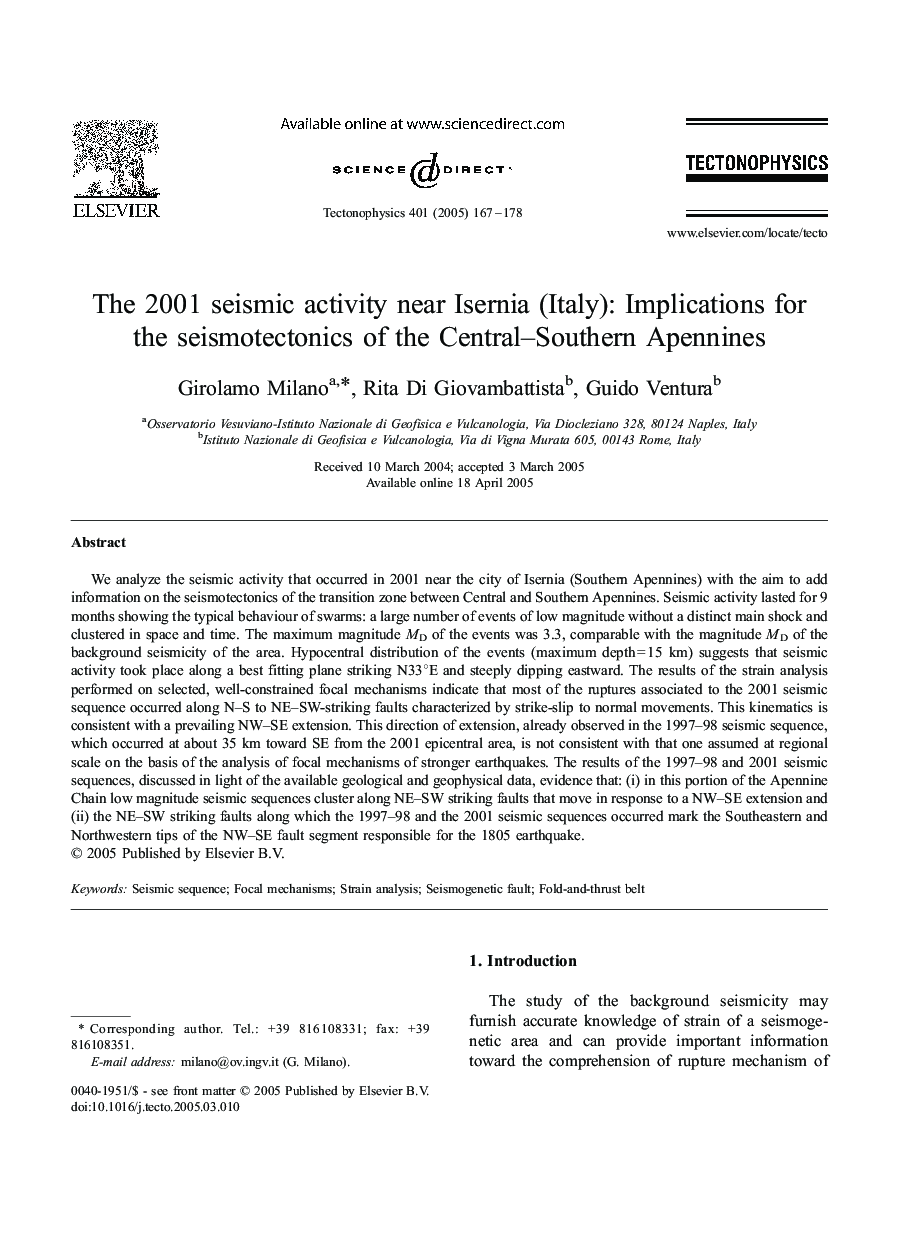| Article ID | Journal | Published Year | Pages | File Type |
|---|---|---|---|---|
| 9527014 | Tectonophysics | 2005 | 12 Pages |
Abstract
We analyze the seismic activity that occurred in 2001 near the city of Isernia (Southern Apennines) with the aim to add information on the seismotectonics of the transition zone between Central and Southern Apennines. Seismic activity lasted for 9 months showing the typical behaviour of swarms: a large number of events of low magnitude without a distinct main shock and clustered in space and time. The maximum magnitude MD of the events was 3.3, comparable with the magnitude MD of the background seismicity of the area. Hypocentral distribution of the events (maximum depth = 15 km) suggests that seismic activity took place along a best fitting plane striking N33°E and steeply dipping eastward. The results of the strain analysis performed on selected, well-constrained focal mechanisms indicate that most of the ruptures associated to the 2001 seismic sequence occurred along N-S to NE-SW-striking faults characterized by strike-slip to normal movements. This kinematics is consistent with a prevailing NW-SE extension. This direction of extension, already observed in the 1997-98 seismic sequence, which occurred at about 35 km toward SE from the 2001 epicentral area, is not consistent with that one assumed at regional scale on the basis of the analysis of focal mechanisms of stronger earthquakes. The results of the 1997-98 and 2001 seismic sequences, discussed in light of the available geological and geophysical data, evidence that: (i) in this portion of the Apennine Chain low magnitude seismic sequences cluster along NE-SW striking faults that move in response to a NW-SE extension and (ii) the NE-SW striking faults along which the 1997-98 and the 2001 seismic sequences occurred mark the Southeastern and Northwestern tips of the NW-SE fault segment responsible for the 1805 earthquake.
Related Topics
Physical Sciences and Engineering
Earth and Planetary Sciences
Earth-Surface Processes
Authors
Girolamo Milano, Rita Di Giovambattista, Guido Ventura,
